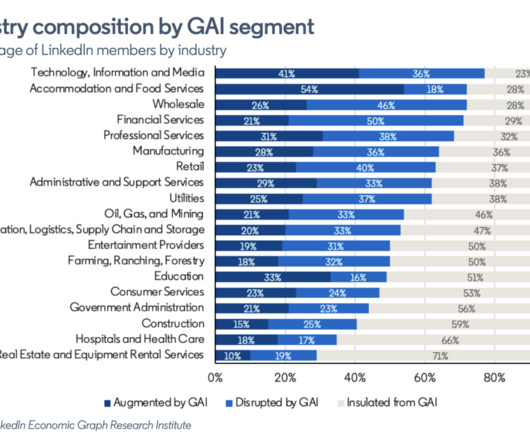The Future of Hiring: 3 Skills That Will Be Essential in 2030
Eightfold
DECEMBER 16, 2019
More than one in three workers will likely need to reskill by 2030. Demand for coding and programming, for example, will likely increase by 55 percent by 2030, Jacques Bughin, Susan Lund and Eric Hazan at McKinsey explain. . In 2030, these skills are going to be even more important. . “By Others could be displaced by automation.















Let's personalize your content